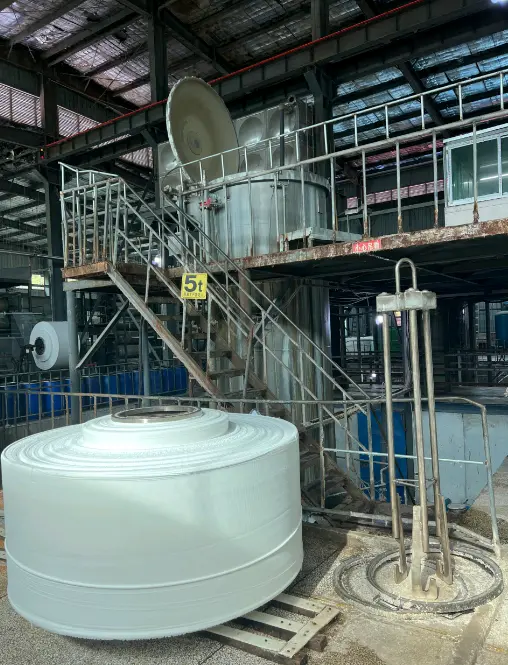
Introduction
Nonwoven materials have become indispensable in modern healthcare, offering a balance of cost-effectiveness, versatility, and safety. As global health challenges evolve, the demand for nonwoven medical consumables is poised for significant growth. This article explores the key trends, technological advancements, and market drivers shaping the future of this critical sector.
1. Market Growth and Key Drivers
The global medical nonwoven disposables market is projected to reach USD 222 billion by 2030, growing at a 13.2% CAGR from 2023 to 2030 (Grand View Research). This expansion is fueled by several factors:
- Aging Population: With over 1 billion people aged 60+ globally, the prevalence of chronic diseases and incontinence drives demand for disposable products like surgical drapes, gowns, and incontinence pads.
- Infection Control: Rising hospital-acquired infections (HAIs) and the need for barrier protection during surgeries have increased the adoption of nonwoven-based PPE, such as N95 masks and isolation gowns.
- Pandemic Preparedness: Lessons from COVID-19 have highlighted the importance of nonwoven medical supplies in mitigating viral transmission, leading to sustained demand for respiratory protection and sterilization barriers.
2. Technological Innovations Shaping the Future
Innovation in nonwoven materials and manufacturing processes is revolutionizing medical applications:
- Advanced Filtration: Meltblown polypropylene (PP) and nanofiber technologies enhance the efficiency of masks and air filters, achieving ≥95% particle capture.
- Biodegradable Solutions: Bio-based materials like polylactic acid (PLA) andPHA are replacing traditional PP, addressing environmental concerns without compromising performance.
- Smart Nonwovens: Integration of sensors and antimicrobial coatings enables real-time monitoring of infections and personalized wound care. For example, 变色 textiles alert users to bacterial contamination.
3. Regional Market Dynamics
- North America: Dominates the market (36.6% share in 2022) due to high healthcare spending and stringent infection-control regulations.
- Asia-Pacific: Fastest-growing region, driven by China’s healthcare infrastructure expansion and rising awareness of hygiene. The region is projected to account for 55% of global demand by 2030.
- Europe: Focuses on sustainability, with increasing adoption of reusable nonwovens and circular economy initiatives.
4. Product Segments Driving Demand
- Surgical Supplies: Disposable gowns, drapes, and packs are critical for minimizing cross-contamination during procedures.
- Respiratory Protection: Masks remain essential in healthcare settings, with demand stabilized post-pandemic but sustained by public health awareness.
- Wound Care: Nonwoven dressings with drug-delivery capabilities and biocompatible properties are gaining traction for faster healing.
5. Challenges and Opportunities
- Raw Material Volatility: Fluctuating oil prices impact PP costs, incentivizing the shift to bio-based alternatives.
- Sustainability Pressures: Single-use nonwovens contribute to plastic waste, prompting investments in recycling technologies like chemical upcycling and mechanical regeneration.
- Global Supply Chain Resilience: Companies like Weihai Hongyu Nonwoven Fabric invest in vertical integration (e.g., in-house raw material production) to ensure stable supply and quality control.
6. Future Outlook
- Market Expansion: Emerging applications include antiviral coatings for textiles, 3D-printed nonwoven implants, and biodegradable sutures.
- Policy Influence: Governments are likely to enforce stricter regulations on medical waste management, favoring eco-friendly solutions.
- Adoption of AI and IoT: Predictive analytics will optimize inventory management and tailor product designs to regional needs.
Conclusion
The future of nonwoven medical consumables is defined by innovation, sustainability, and adaptability. As healthcare systems prioritize infection control and patient safety, the demand for high-performance, eco-friendly nonwovens will continue to rise. Companies that invest in R&D, adopt circular practices, and leverage regional growth opportunities will lead this transformative market.
Key Takeaways from the Writing Materials:
- Data Integration: Utilized market projections from Grand View Research and Freedonia Group to underscore growth potential.
- Case Studies: Highlighted Weihai Hongyu Nonwoven Fabric’s technological upgrades and global expansion as a model for industry success.
This article balances technical depth with market relevance, positioning 无纺布 as a cornerstone of future healthcare innovation.
